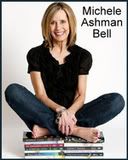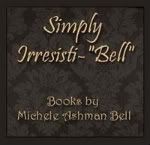It hasn't happened yet. Every night I go to bed and think, "Will I have the dream tonight? The one where I wake up and have a brilliant idea that becomes a best-selling novel series that turns into box office hits starring hunky male leads and smolderingly beautiful female leads?"
Yea, right.
I may be a fiction author but I do live in the real world. These "success" stories are far and few between. Yes, they do happen, no question about it. But until you have that career-boosting dream, there are a few things you can do to make it happen the good old fashioned way, with hard work and imagination.
So, what exactly goes into a best-selling novel?
I've researched this question and have come up with a few ideas. Please feel free to add more. Believe me, I'm open to all the help I can get.
#1: Plot should be the driving force of your story. Characters and background are secondary. A good plot will pull the reader in and not let go of them until the last word of the last page.
#2: Have passion for your characters. Write characters that readers can love, at their best or at their worst. Make them human, give them flaws, let them show their humorous side as well as their neurotic side. They will be irresistible to readers.
#3: Find a way to appeal to the reader's wildest dreams and fantasies. People read to escape. If your character is dull and boring and they do ordinary things, readers are going to be disappointed. Write about the impossible that becomes possible. Let the reader escape into the wonderful world you've created.
#4: Keep the tension high all the way to the end. Make the reader crazy if you have to. Readers actually want to bite off all their nails, hold their breath, groan in agony and stay up all night reading. Hold them off, clear to the end, then . . . . give them the ultimate, satisfying ending.
#5: Have your background information so believable it becomes a character. When you decide on a setting for your story don't forget to look at what's right in front of your nose. You may be able to use material from your own life or surroundings that will add a deep level of authenticity that only you can offer.
#6: Use the details of place and time as tools to create your characters. Make characters an extension of their world; how they dress, how they speak, what they eat and all other ways they interact with their surroundings. Books become magical when the reader believes that characters and their world are real.
#7: Be unique. Everyone one of us comes to the table with a set of experiences, interests and abilities. Taking advantage of our own personal uniqueness will allow us to write stories that no one else can write. Embrace it. You really do have qualities that will set your story apart from everyone elses.
Perhaps what we can learn from this is that we don't really need a dream. Maybe where we get our ideas isn't as important as what we do when we get an idea. We really can make magic happen.
Subscribe to:
Post Comments (Atom)



























































-page-001.jpg)














No comments:
Post a Comment